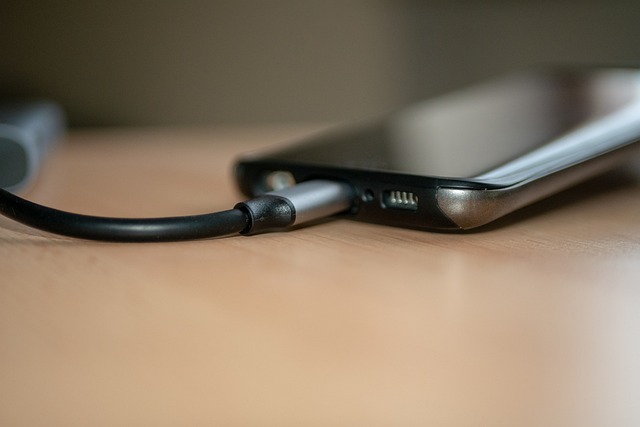The Quiet Battle for USB-C Standards: Power, Politics, and Your Devices
In the world of consumer electronics, the humble charging cable rarely gets the spotlight. But beneath the surface of USB-C's growing ubiquity lies a complex ecosystem of competing standards, corporate interests, and technical challenges that affect every device we use. As governments mandate universal charging standards and manufacturers reluctantly fall in line, the seemingly simple connector has become ground zero for a power struggle that will shape our tech landscape for years to come. The journey to a truly universal connector remains surprisingly complicated.

The fragmented world of USB-C
What appears to be a single, universal connector actually hides a bewildering array of capabilities and limitations. Walk into any electronics store today and you’ll find shelves lined with USB-C cables that look identical but deliver wildly different experiences. Some transfer data at blazing 40Gbps speeds while others crawl at a tenth of that rate. Some can charge laptops at 100W while others max out at 15W. Some support video output; others don’t.
This fragmentation stems from USB-C being more of a connector shape than a unified standard. While the physical port has been standardized, the protocols running through those pins vary dramatically. The USB Implementers Forum (USB-IF) has created a confusing alphabet soup of standards: USB 3.2 Gen 2x2, USB4, Power Delivery, DisplayPort Alt Mode, and more. Even for tech enthusiasts, deciphering which cable supports which feature has become nearly impossible without consulting technical specifications.
Manufacturers have exploited this confusion, often using proprietary variants that lock consumers into their ecosystems. OnePlus, Oppo, and others have developed their own rapid charging technologies that work only with specific chargers and cables. Apple’s MagSafe, while providing convenient magnetic attachment, essentially creates another closed system that encourages consumers to buy Apple-certified accessories at premium prices.
The regulatory pressure cooker
The European Union has taken the most aggressive stance on charging standardization, passing legislation that requires all portable electronics to adopt USB-C by December 2024. The impact has been seismic, forcing even reluctant manufacturers like Apple to abandon proprietary ports. The iPhone 15 lineup marked Apple’s reluctant capitulation to this regulatory pressure after years of defending its Lightning connector.
Similar regulations are being considered in India, Brazil, and parts of the United States. This global regulatory convergence is creating unprecedented pressure on the tech industry to truly standardize, not just adopt the same connector shape while maintaining functional fragmentation.
The push for standardization isn’t solely about consumer convenience. Environmental concerns figure prominently in regulatory arguments. The European Commission estimates that disposed and unused chargers generate more than 11,000 tons of e-waste annually. By standardizing charging ports, regulators hope to reduce unnecessary accessory purchases and the associated environmental impact.
The technical reality behind the standard
Despite sharing the same port design, the underlying capabilities of USB-C implementations vary dramatically based on the chipsets, controllers, and design choices manufacturers make. This technical reality often gets lost in discussions about universal charging.
Power delivery capabilities represent one of the most significant variables. The USB Power Delivery specification has evolved through multiple revisions, currently supporting up to 240W charging—enough for most laptops and small appliances. However, implementing these higher power levels requires specialized hardware and safety mechanisms. Most USB-C cables in consumers’ drawers support only 60W or less, creating a mismatch between consumer expectations and reality.
Data transfer speeds present similar challenges. While some premium USB-C connections support Thunderbolt 4’s 40Gbps bandwidth, many others are limited to 10Gbps or even 5Gbps. The naming conventions haven’t helped: USB 3.2 Gen 1, formerly known as USB 3.0, delivers just 5Gbps, while USB 3.2 Gen 2x2 pushes 20Gbps. The USB-IF has attempted to simplify this with marketing names like “SuperSpeed” and “SuperSpeed Plus,” but confusion persists.
The market consequences
For consumers, the transition to USB-C brings both benefits and frustrations. The standardized connector shape means fewer different cables to pack when traveling, but the invisible differences in capabilities mean not all cables work equally well with all devices.
Accessory manufacturers have found a lucrative market in this confusion. Premium USB-C cables now command prices exceeding $60, promising universal compatibility and maximum performance. Budget options flood marketplaces with inconsistent quality and questionable safety standards.
Industry analysts estimate the global USB-C market will exceed $127 billion by 2030, growing at approximately 17% annually. This expansion reflects not just the adoption of the connector but the entire ecosystem of chargers, hubs, displays, and other accessories built around it.
The future of connectivity
As USB-C becomes the default connector for most consumer electronics, industry focus is shifting from adoption to refinement. The USB4 specification aims to simplify the technology landscape by requiring a minimum level of capability, including 20Gbps data transfer and substantial power delivery.
Looking forward, wireless charging technologies threaten to make physical ports obsolete eventually. Companies like Xiaomi and Motorola have demonstrated completely portless phone concepts relying solely on wireless charging and data transfer. However, efficiency losses and slower charging speeds have kept these solutions from mainstream adoption so far.
The EU regulations include provisions for reviewing and adapting standards as wireless charging matures, acknowledging that today’s universal connector may eventually become tomorrow’s legacy port. Nevertheless, industry experts predict USB-C will remain dominant through at least 2030 before wireless alternatives potentially take over.
As our devices continue evolving, the humble charging cable represents more than convenience—it embodies the complex balance between standardization and innovation, between regulatory mandates and market forces. While USB-C may look like a simple solution on the surface, the reality underneath reveals much about how the technology industry really works.





